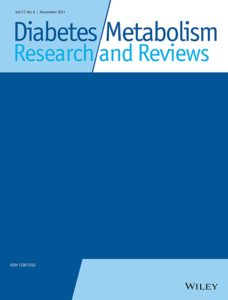Utility of serum lipid ratios for predicting incident type 2 diabetes: the Isfahan Diabetes Prevention Study
Authors
Affiliations
Abstract
Background: In this study, we evaluate the association between triglyceride to high-density lipoprotein cholesterol (TG/HDL) ratio and total cholesterol (TC) to HDL (TC/HDL) ratio and the risks of type 2 diabetes (T2D) in an Iranian high-risk population.
Methods: We analysed 7-year follow-up data (n = 1771) in non-diabetic first-degree relatives of consecutive patients with T2D 30-70 years old. The primary outcome was the diagnosis of T2D based on repeated oral glucose tolerance tests. We used Cox proportional hazard models to estimate hazard ratio for incident T2D across tertiles of TG/HDL and TC/HDL ratios and plotted a receiver operating characteristic (ROC) curve to assess discrimination.
Results: The highest tertile of TG/HDL and TC/HDL ratios compared with the lowest tertile was not associated with T2D in age- and gender-adjusted models (HR 0.99, 95% CI: 0.88, 1.11 for TG/HDL ratio and 1.10, 95% CI: 0.97, 1.23 for TC/HDL ratio). Further adjustment for waist circumference or body mass index, fasting plasma glucose, and low-density lipoprotein cholesterol did not appreciably alter the hazard ratio compared with the age- and gender-adjusted model. The area under the ROC curve for TG/HDL ratio was 57.7% (95% CI: 54.0, 61.5) and for TC/HDL ratio was 55.1% (95% CI: 51.2, 59.0).
Conclusions: TG/HDL and TC/HDL ratios were not robust predictors of T2D in high-risk individuals in Iran. Copyright © 2015 John Wiley & Sons, Ltd.
Keywords: TG/HDLC ratio; first-degree relatives; incidence; lipid ratios; lipids; risk factor; type 2 diabetes.

